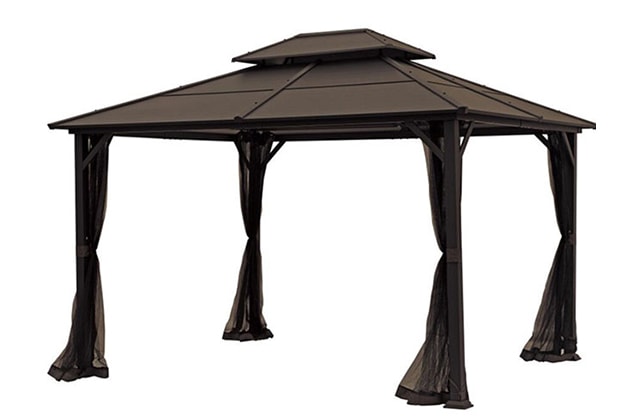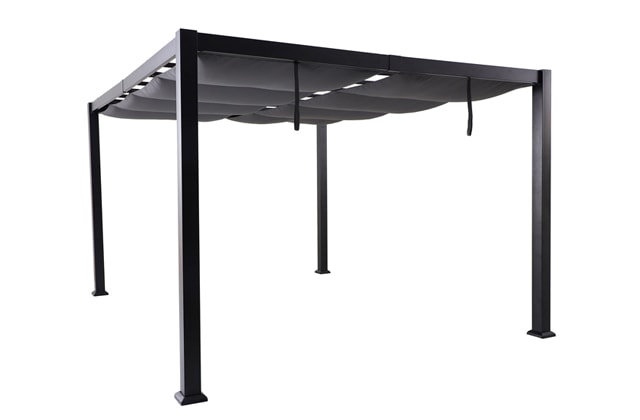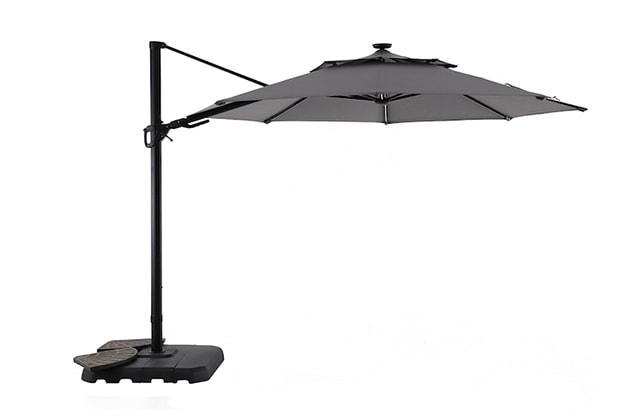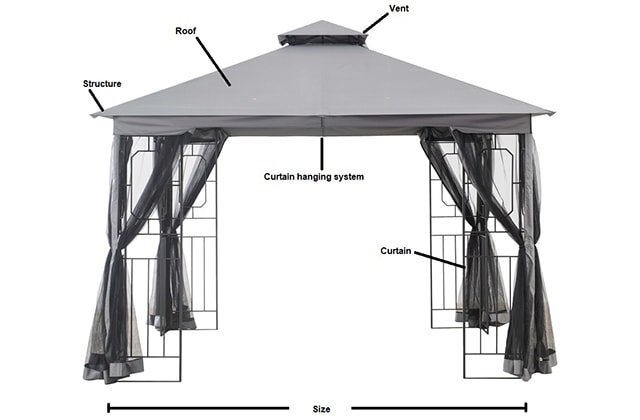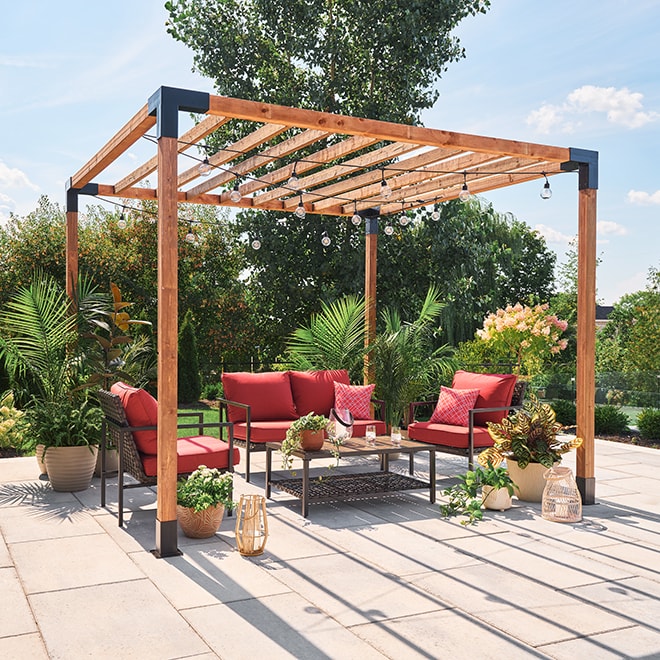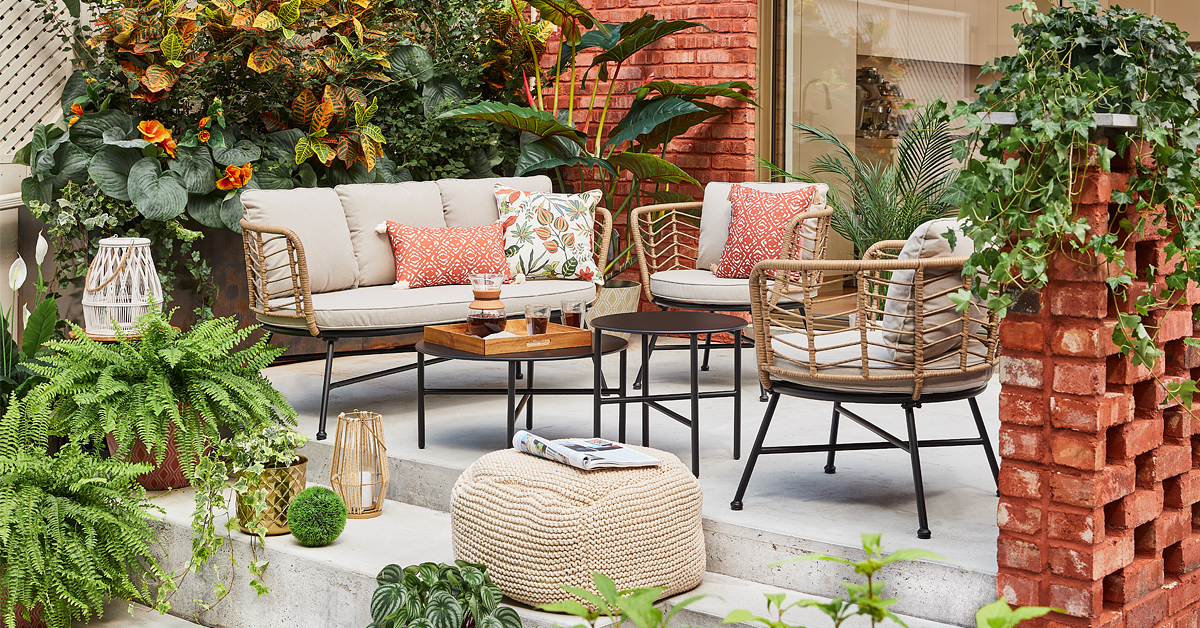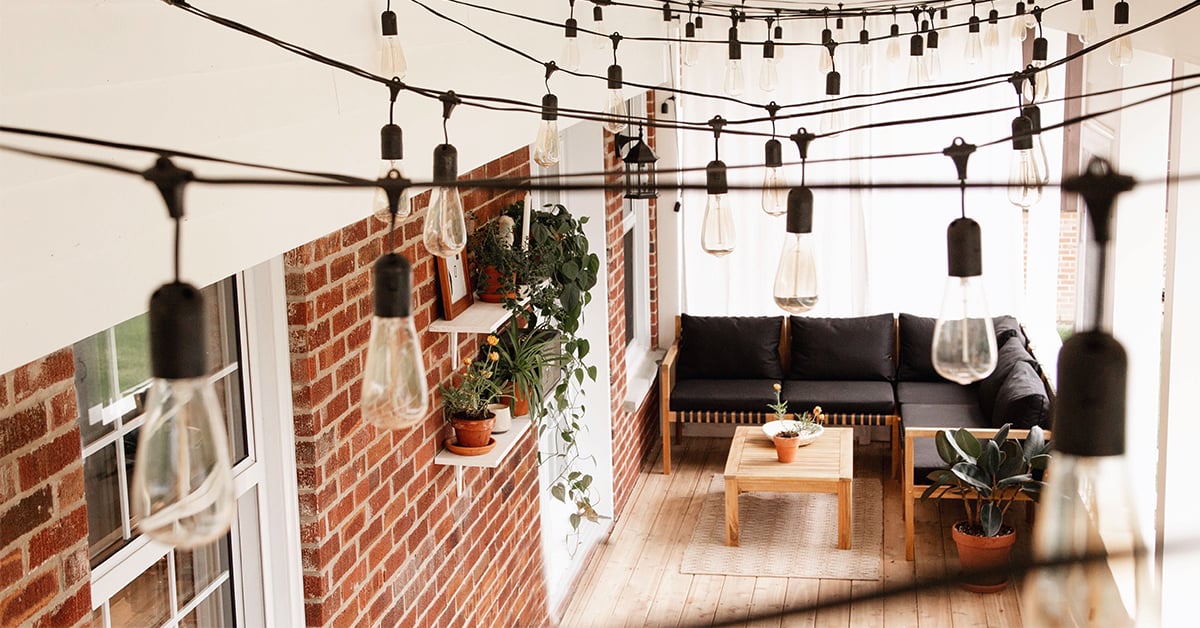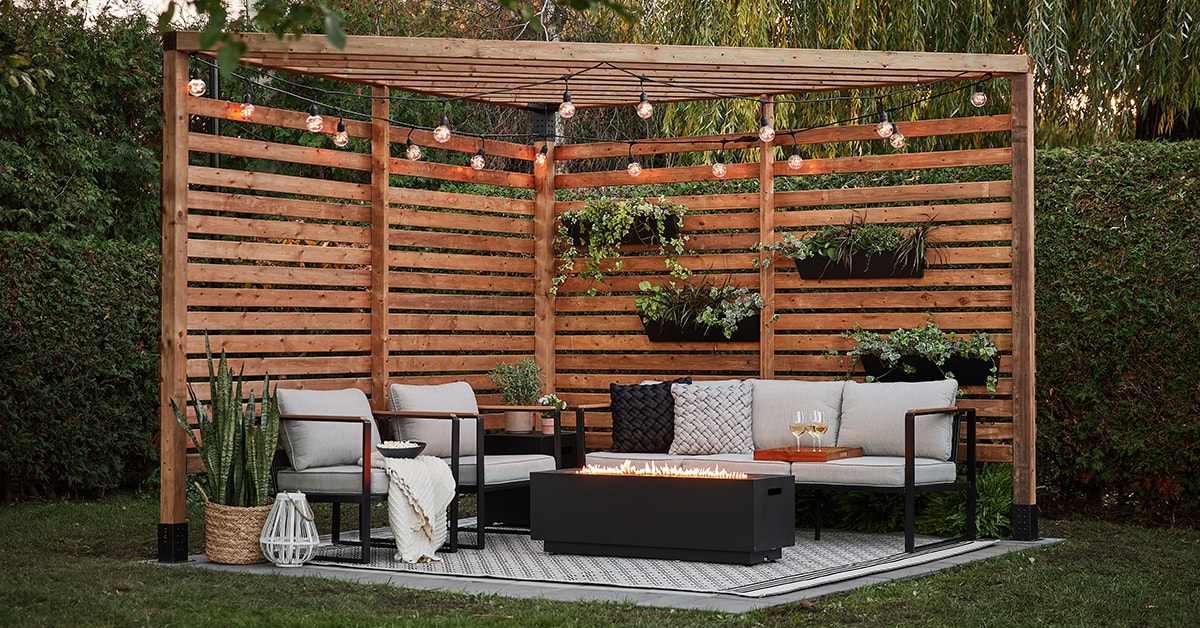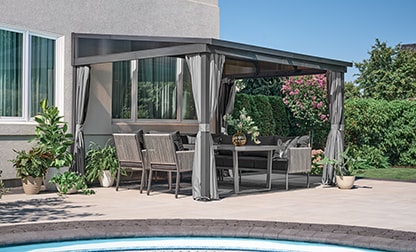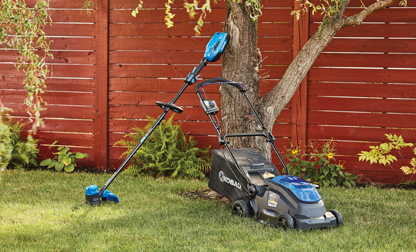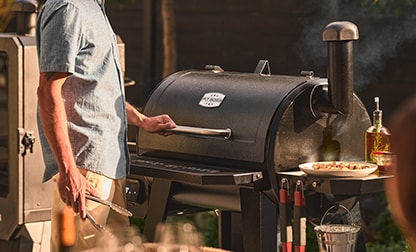Sun Shelter Models
Sun shelters include all types of yard structures that create shade and provide protection from the sun during the summer: gazebos, pergolas, parasols and awnings.
By “gazebo” we usually mean a sun shelter whose main function is to protect the garden furniture, which can be a simple table and chairs or a whole outdoor living room set. A gazebo may also protect an outdoor spa or a barbecue. Relatively easy to install, they should be set up on wood patios, on a concrete surface, or on concrete slabs. It is not advisable to install the shelter directly on the lawn, because you won’t be able to secure it firmly enough to the ground.
Gazebos constructed entirely of wood also exist. They harmonize well with all types of outdoor decor, but the wood must be treated to protect it from moisture and insects.










